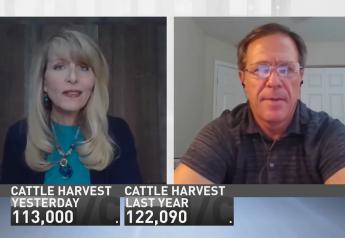Navigating Structural Changes: Rabobank's Insights on Challenges and Opportunities in Global Animal Protein Markets

From pork to beef to poultry and all other animal protein sources, the diversity of animal protein options creates a dynamic marketplace across the globe.
Rabobank recently released its 2024 outlook for global animal protein—focused on animal protein markets and production throughout the world.
Production
Overall, Rabobank believes animal protein production will keep growing in 2024, but at a slower pace. Specifically, beef, pork and wild catch seafood will see a decrease in production, while poultry and aquaculture show the strongest growth.
Drought leading to a massive U.S. herd reduction, high input costs and low profit margins have played a large part in the production slowdown of beef and pork especially over the last two years.
Rebuilding the herd looks to still be an expectation—not reality—heading into 2024. This will continue beef’s production decline into next year.
Pork has been through a challenging year, and Rabobank expects production to contract modestly in 2024.
Finding a silver lining, Rabobank experts believe some market conditions may improve as input costs ease for producers.
Structural Changes
Some opportunities and risks may also be on the horizon as changes in market conditions are structural rather than cyclical—adding ongoing costs and changes, Rabobank explains.
Specifically, Rabobank encourages animal protein companies and producers to take stock on their strengths and prepare to transition their business to an operating environment with high costs and tight margins.
These structural changes include, but are not limited to:
- Demographic Changes: tightening labor markets which leads to increased production costs, reduced population growth which may slow consumption growth
- Investment Needs: funds to improve productivity and to upgrade production systems to meet emerging market and regulatory needs and consumer preferences
- Higher Prices: consumers are adapting to higher prices and are showing a willingness in some markets to pay a premium for better quality products
For animal protein companies and producers, now is the time to consider productivity improvement efforts, review the portfolio, strengthen partnerships, consider investment needs and opportunities, and adjust pricing strategies to the higher cost base.
Consumption
The increased costs of goods and services is weighing on consumers as incomes stagnate and a recessionary threat looms.
Rabobank expects inflation among the world’s top animal protein-consuming countries to average more than 3% next year, but that represents 15% to 20% higher costs compared to pre-pandemic levels, says the report.
Meanwhile, high production costs and tighter supplies will support animal protein prices and constrain global consumption in 2024, Rabobank explains.
Overall, consumer decisions at the meat case are shifting as budgets tighten, as well as more emphasis on food nutrition, quality and convenience helping sway purchasing patterns.
Outside Pressures
Disease, such as African swine fever (ASF) and highly pathogenic avian influenza (HPAI), are major health challenges in global animal protein production that continue to drive production loss, create uncertainty and affect trade, Rabobank explains. While more localized, foot-and-mouth disease, porcine reproductive and respiratory syndrome (PRRS), and lumpy skin disease also have an affect on production and market access.
Heading into 2024, these disease risks remain top of mind. While surveillance and prevention is still important, Rabobank says efforts in 2024 will focus on biosecurity and traceability, regionalization and producer compensations models, vaccines and the use of advanced genetic technologies.
Weather patterns, such as the shift to El Niño, could also bring consequences for global animal protein. In general, El Niño conditions lead to driers conditions in northern Brazil, Australia and Asia, while there tends to be more rainfall in southern parts of Latin American and the U.S., Rabobank explains.
The growing idea of sustainability and its reliance on traceability also adds pressure to the market. Connections throughout the supply chain, from retailers all the way back to the farm or ranch, will be the most effective way to measure progress in this area.
Rabobank also expects animal protein supply chains to begin exploring product claims and labeling alongside emissions reduction progress.
Both dynamic and resilient, the animal protein sector is likely heading into another challenging year. However, it’s important to understand and consider the potential opportunities that could help operations survive or even thrive in the years to come.
Read More:







